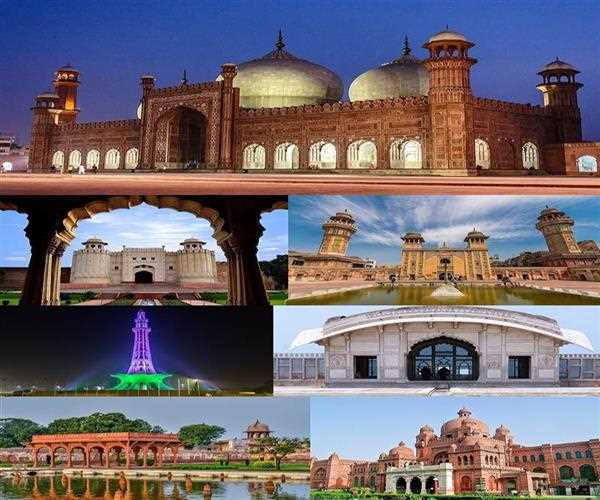Search here

14-Jul-2022
Hindus' Social Standing in Lahore before Partition
The first-time visitor to Lahore who even has the barest understanding of the socio-cultural fabric of the area will not be surprised by their impressions of the city.
The metropolis, which is dominated by the landmarks of its Muslim-majority population, appears on the surface to be exactly what is advertised: an emblem of Pakistani nationalism. This is true of both its various monuments, such as the revered Badshahi Mosque and its signature street markets, like the well-known Anarkali Bazaar.
The city's historical importance in the formation of Pakistan, as the capital of the most populous province in the country and the location where the Muslim League first called for a separate Islamic homeland, further emphasizes its status as an Islamic hub; in fact, it is frequently referred to as the 'heart of the nation.'
Of course, this is modern-day Lahore, the capital of Pakistan.
The anthropologist Haroon Khalid writes in his book Imagining Lahore: The City That Is, The City That Was that there is yet another city hidden deep within the current one that is 'as real as the one described above.'
He claims that there are “physical vestiges of that past city: an abandoned Hindu temple amid a bustling market, an ancient colonial building surrounded by glass-fronted plazas. But for the most part, the city only appears in myths, stories, and legends. These tales are dispersed across the city of Lahore, in the courtyards of Sufi shrines, surrounding Hindu temples that have been abandoned, and beneath its streets and gardens.” Naturally, the Lahore he is referring to is not only the Lahore that existed prior to Partition, when it still had a diverse population of religions and ethnicities, but also the Lahore that existed in more ancient times, about which little is known but whose remnants still stand as murky windows into a past that can only be, as Khalid puts it, 'imagined.'
Hindus have historically lived in Lahore. Lahore, Pakistan, is thought to be 95.2% Muslim, with a Christian minority making up 2.9 percent of the population and Sikhs and Hindus making up the remaining 1.9 percent. A third of the people living in the Lahore district were Sikh and Hindu before India was divided in 1947. In the past, Hindus and Sikhs lived in 'separate enclaves.' During the partition, the city's Hindu and Sikh residents relocated in large numbers to East Punjab and Delhi in India. In the process, Lahore's entire Sikh and Hindu population was exterminated. Muslim immigrants from India took the place of the emigrants. Locals and Muslim refugees fought for ownership of abandoned Sikh and Hindu properties.
According to legend, the first princes were Rajputs from Ayodhya, descended from the same family as those who ruled over Gujrat and Mewar. Lava (son of Rama, a manifestation of Vishnu, and the main character of one of Hinduism's great epics, The Ramayana), according to oral tradition, created Lahore, formerly known as Lavapuri (the city of Lava), while his twin brother Kush founded Kasur, which is now known as Kasur.
A stunning relic, an abandoned temple composed of a small brick hexagonal structure with a dome on top, devoted to the Hindu deity Lava, can be seen in the Lahore Fort, a citadel that contains a collection of buildings from various times in the city's history.
Many historians concur that an ancient Rajput colony founded Lahore sometime between the first and seventh centuries, most likely at the start of the second. They also agree that it quickly became a significant location, the mother of other colonies, and eventually the capital of a strong principality, to which it gave its name. There are various arguments in favor of the idea that the ancient Hindu city of Lahore did not stand exactly where the present metropolis does. According to tradition, the location of old Lahore was close to Ichhra, which is today a neighborhood of Lahore city but was once a village three miles to the west. Previously, the village was known as Icchra Lahore. Additionally, the Bhairo ka sthain and the Chandrat, two of the oldest and holiest Hindu sanctuaries, may be found in this area. Just as the Kashmiri Entrance looks towards Kashmir and the Delhi Gate of contemporary Delhi to the same ancient city, the gate of the present city, known as the Lahori or Lohari Gate, was so named because it was the gateway gazing in the direction of Lohawar or old Lahore.
The presence of Hindu culture began to decline with the Islamic conquests of the area, despite how ancient and affluent Hindu culture was in the city.
Islam and Hinduism, as well as other religions, like Sikhism, were able to coexist there, however, the adherents of each frequently shared holy sites and places of worship, due to the inherent flexibility of religious beliefs among the local population.
Sadly, this environment started to deteriorate under the British, whose 'divide and conquer' imperial strategy encouraged animosity between Muslim and Hindu groups. Tragically, this animosity culminated in the two-nation idea that motivated Partition, of which Lahore was at the vanguard.
The city's population radically altered after being declared a part of the newly founded Muslim nation as thousands of Hindus fled to India to avoid being killed, raped, or having their property destroyed by Muslim mobs.

Join Our Newsletter
Subscribe to our newsletter to receive emails about new views posts, releases and updates.
Copyright 2010 - 2025 MindStick Software Pvt. Ltd. All Rights Reserved Privacy Policy | Terms & Conditions | Cookie Policy